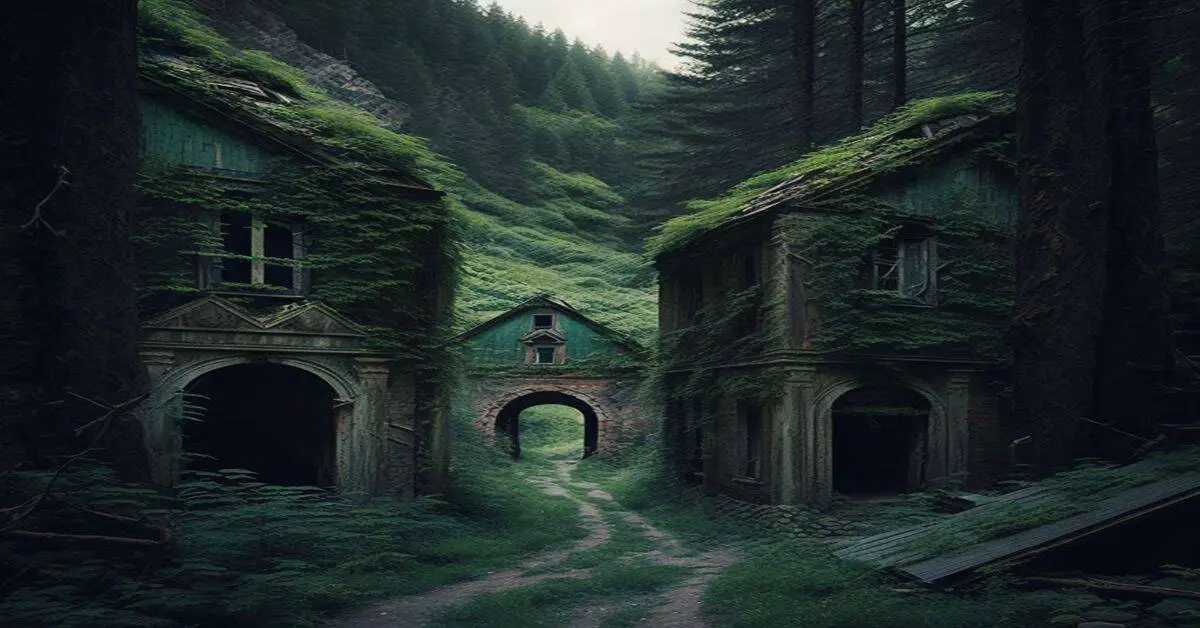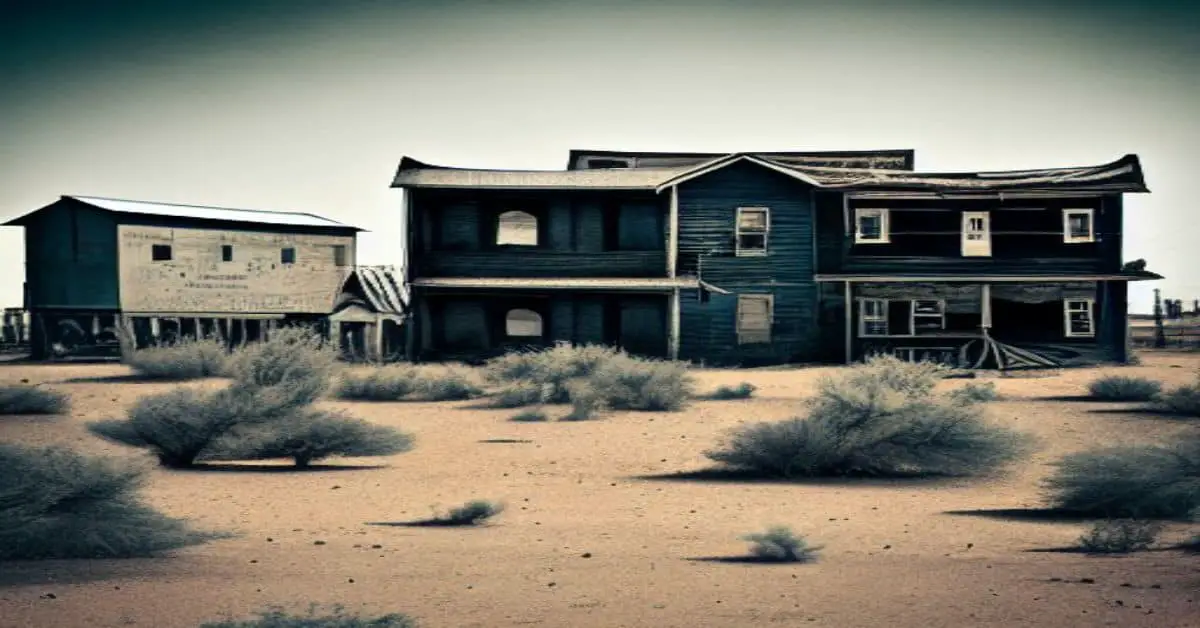Nestled in the heart of Colorado’s Rocky Mountains, Chaffee County boasts a rich history of mining and prospecting that dates back to the mid-1800s. As the mining industry grew, so did the number of settlements around the region.
Today, many of these once-thriving towns have been abandoned, leaving behind a haunting reminder of the past. For those with an interest in history or a sense of adventure, exploring the ghost towns of Chaffee County is a must-do activity.
From the well-preserved St. Elmo to the more obscure Shavano and Swiss Boy, each town offers a unique glimpse into the lives of those who once called these places home. This article will take you on a journey through the ghost towns of Chaffee County, providing a detailed look at what makes each site so captivating and intriguing.
So, grab your camera, lace up your hiking boots, and get ready to discover Chaffee’s haunting past.
Key Takeaways
- Colorado’s Chaffee County has a rich mining and prospecting history dating back to the mid-1800s.
- The county has several abandoned ghost towns, including St. Elmo and Salida, which offer a haunting reminder of the past.
- Visitors can explore well-preserved buildings and hear eerie tales about former residents and visitors, with guided ghost tours available in some areas.
- Each ghost town offers a unique glimpse into the lives of those who once called them home and the challenges faced by pioneers who settled in the rugged region.
St. Elmo and Salida
Among the list of ghost towns in Colorado’s Chaffee County, St. Elmo and Salida are prominent locations with a rich history of abandoned buildings and eerie tales.
St. Elmo, once a bustling mining town, was established in 1880. The town’s population swelled to over 2,000 during its peak in the late 1800s, but by the early 1920s, the remaining residents had moved away. Today, visitors can explore the town’s history by visiting its well-preserved buildings, including the general store, hotel, and schoolhouse. The town is also popular among ghost hunters who claim to have encountered the spirit of Annabelle Stark, the daughter of one of the town’s founders, who is said to haunt the St. Elmo Hotel.
Salida, on the other hand, is a still-thriving town with a rich history and haunted legends. The town was established in 1880 as a hub for the Denver and Rio Grande Railroad and was once home to a bustling red-light district. The district’s most famous resident was ‘Diamond’ Lil, a notorious madam who ran one of the town’s most successful brothels.
Today, some of the town’s historic buildings, including the Palace Hotel, are said to be haunted by the ghosts of former residents and visitors. Visitors can take a guided ghost tour of Salida to learn more about its haunted past and the stories behind its eerie legends.
Shavano to Tasmania
From Shavano to Tasmania, several abandoned settlements in Colorado’s Chaffee County offer a glimpse into the region’s history. In Shavano, one can find the remains of several abandoned buildings, including an old general store and post office. These buildings tell the story of a once-thriving mining town abandoned in the early 1900s. Visitors can explore the ruins and learn about the lives of the miners who once called Shavano home.
Meanwhile, Tasmania is another ghost town in Chaffee County that offers a unique glimpse into the past. Once a bustling mining town, Tasmania now lies in ruins and is slowly being reclaimed by nature. Visitors can explore the abandoned buildings, including an old schoolhouse and several mine structures.
By uncovering the history of Tasmania’s abandoned buildings, visitors can gain a deeper understanding of the challenges faced by the pioneers who settled in this rugged region and the impact that mining had on their lives.
Tomichi, Turret, and Vicksburg
Tomichi, Turret, and Vicksburg are three additional ghost towns in Chaffee County that offer visitors a glimpse into the region’s mining and settlement history.
Tomichi, located on the eastern side of Chaffee County, was once a bustling mining town. Visitors can explore the ruins of the town’s old post office, general store, and schoolhouse. There are also several intact buildings, such as the Tomichi Hotel, which dates back to the early 1900s. Tomichi is also home to the Tomichi Dome, a unique geological formation that rises above the town.
Turret, situated in the southern part of Chaffee County, was established in 1879 and quickly became a center for mining activity. The town’s population peaked in the early 1900s, but by the 1930s, Turret had become a ghost town. Today, visitors can explore the remains of the town’s old schoolhouse and general store and the Turret Mill, which was once a key part of the town’s mining operations.
Vicksburg, located in the northern part of the county, was founded in 1867 and named after the Battle of Vicksburg during the Civil War. Visitors can discover the rich history of this town by exploring its old cemetery and the ruins of the Vicksburg Hotel. The town also has a restored general store as a museum showcasing the area’s mining heritage.
Frequently Asked Questions
What caused these towns to become ghost towns?
The decline of mining activities due to economic downturns and natural disasters such as fires and floods were major factors that led to the abandonment of ghost towns in Chaffee County, Colorado.
Are there any paranormal activities reported in these ghost towns?
Paranormal investigations and local legends surround some of Chaffee County’s ghost towns, including St. Elmo and Vicksburg. Visitors and researchers have documented reports of ghostly apparitions, unexplained noises, and strange occurrences.
How accessible are these ghost towns to visitors?
Accessibility options to Chaffee County’s ghost towns vary, with some only accessible by foot or off-road vehicles. Tourist amenities are limited, but St. Elmo offers a museum and some services. Visitors should research specific towns beforehand.
Is there any historical significance to these ghost towns beyond their abandonment?
The ghost towns of Chaffee County have historical context beyond their abandonment. They represent the cultural impact of mining and railroads on the area, and serve as a reminder of Colorado’s past boom and bust cycles.
What efforts have been made to preserve or restore these ghost towns?
The community has made preservation efforts to restore some of the buildings in St. Elmo and Vicksburg. The St. Elmo Historical Foundation has been instrumental in maintaining the town’s historic buildings and promoting tourism. Community involvement is essential to preserving the unique heritage of these ghost towns.


